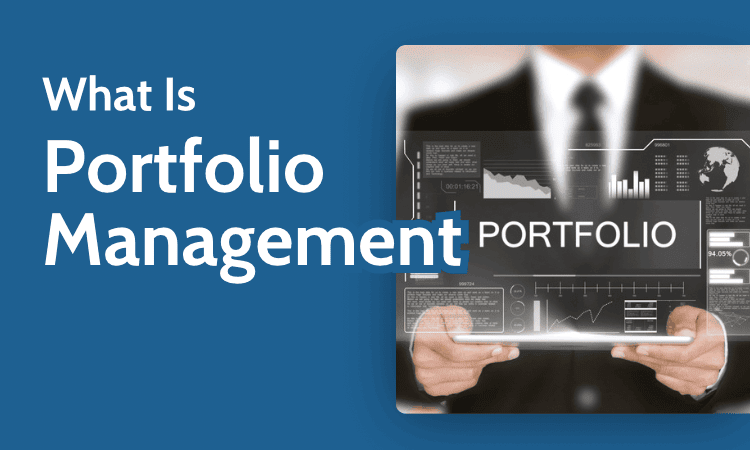
Why you can trust us
- 407 Cloud Software Products and Services Tested
- 3056 Annual Software Speed Tests
- 2400 plus Hours Usability Testing
Our team of experts thoroughly test each service, evaluating it for features, usability, security, value for money and more. Learn more about how we conduct our testing.
Key Takeaways: Project Portfolio Management (PPM)
- Project portfolio management goes beyond standard project management, focusing more on long-term company strategies.
- The best portfolio management starts at the beginning, where you define clear objectives and goals through strong documentation.
- For large-scale projects, it’s best to hire a project portfolio manager with plenty of experience, especially if they’re managing large budgets.
Facts & Expert Analysis About Portfolio Management in Project Management:
- Use software: You need powerful software to help you manage your whole portfolio. Due to their diverse tool sets, we recommend using monday.com or ClickUp.
- Take your time: Building a portfolio of projects takes time and resources. We suggest building slowly so you can easily address issues and smoothly scale your company.
- Build a foundation: A project quality plan will serve as the foundation for your project portfolio. It should include best practices, plans for addressing risks and training documentation to help support your teams.
Project managers are often asked to find the best project management software for portfolio management. However, the term “portfolio management” is vague and can often apply to different sectors and fields. If you’re a project manager and want to learn more about portfolios, this guide will answer the question: What is portfolio management?
Before we discuss what you should know about portfolio management and a portfolio manager’s responsibilities, let’s do some quick housekeeping. Portfolio managers also exist in the financial world. They’re tasked with implementing investment strategies, and taking care of mutual funds and investment portfolios. In this guide, we’re referring to a different type of portfolio manager.
We’ll focus on the project manager who handles multiple projects within a company, both short-term and long-term. In this case, project managers are commonly referred to as project portfolio managers. They are responsible for the project management processes throughout the whole company, rather than for one specific project. Now, let’s dive into portfolio management.
Meet the experts
Learn more about our editorial team and our research process.
What Is Portfolio Management in Project Management?
Project portfolio management is sometimes referred to as PPM. For the purpose of this guide, we will use its full name, but it’s useful to know in case you see the acronym elsewhere. Let’s dig a little deeper into project portfolio management as the responsibilities go beyond typical project management.
Project Management
Check out our project management courses and grab a limited-time offer.
Registration available now!
Enroll Now 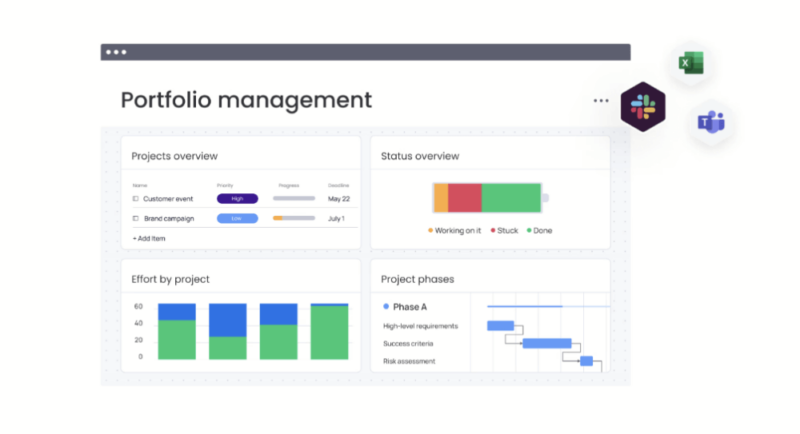
monday.com offers clean dashboards, giving you a clear overview of your projects.
Portfolio managers don’t necessarily take care of managing tasks and monitoring the productivity of team members. Instead, they implement company-wide strategies that will be used for all of the projects within an organization. Strategies cover different areas too, including financials, resources and work management.
When creating a project portfolio management process, portfolio managers will decide which key performance indicators (KPIs) are important to the company. They will also determine the best way to measure KPIs and assist in choosing the best portfolio management software.
More on Portfolio Management in Project Management
Now that you have an overview of portfolio management within project management, allow us to expand on the details a little further.
When it comes to managing a portfolio’s financial elements, the portfolio manager will allocate funds to different projects — also known as asset allocation. They often work with a financial officer to decide what to spend on resources and which materials they need. By monitoring progress throughout, they’ll also readjust budgets across different projects within the portfolio.
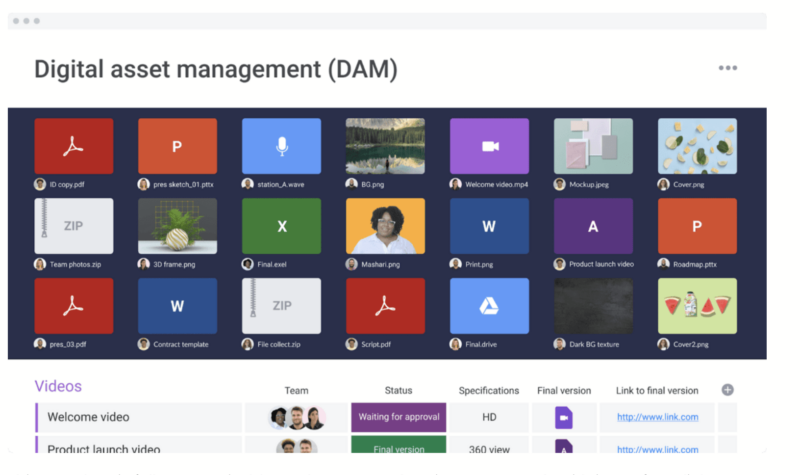
Having good file management is an essential best practice when managing a portfolio.
On the topic of resources, a portfolio manager may also be responsible for a company’s hiring strategy. This involves analyzing what types of employees are required for the different projects within a portfolio and determining how they will fit into the company’s organizational structure.
When managing a portfolio, the manager will also take care of project documents, company values and other work-related content that others need to access. This management includes authorizing specific users to access in-house documents and materials that pertain to the applicable projects.
What Is the Process of Portfolio Management?
Project portfolio management has a defined set of processes. These include what areas a portfolio manager will work on and how they will approach them. We will break down the different elements that make up the overall process of portfolio management.
Research
Project portfolio management starts with building your portfolio. To do this, portfolio managers will research what types of projects a company wants to take on, and then determine which projects will be beneficial. The best way to manage this is to build a potential project database and liaise with other stakeholders to decide where best to move forward.
Planning
Once you know which projects you want to work on, it’s time to plan how to execute and complete them. Questions like “How many projects do we want to work on simultaneously?” and “Which projects do we want to prioritize?” should be part of the planning phase. It’s also a good time to identify budgets and decide how much you can invest into a portfolio.
Analyzing Benefits
As part of portfolio management, the lead manager analyzes the benefits that active projects bring to a company. This includes the time and effort that teams must put into completing a project, and the success of the end results. In doing so, project managers can decide if similar projects are worth it in the future.
Risk Assessment 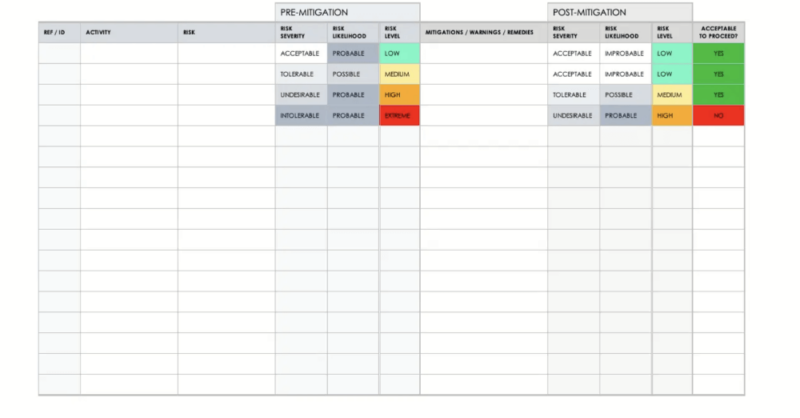
Doing early risk assessment helps reduce the risk of issues later in your projects.
Effective portfolio management involves assessing the risks associated with taking on a group of projects. These include potential barriers to project completion, possible financial losses or scope creep should the project go off course. Another risk involves the time a project may take away from focusing on other business areas.
Setting Up Communication Systems 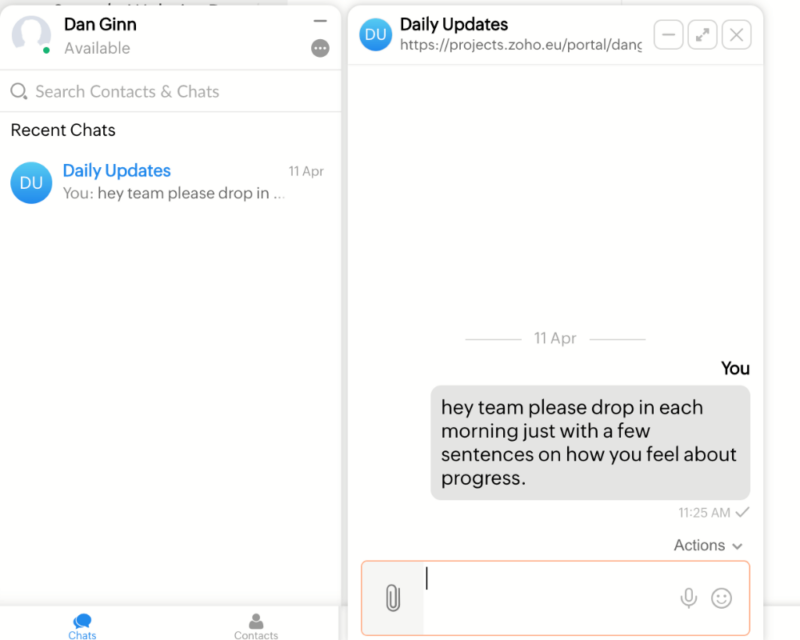
Software like Zoho Projects provides useful instant messaging
tools so you can keep up with communication.
Managing a portfolio requires high-level communication skills. Whether it’s liaising with stakeholders, cross-functional teams or individual team members, portfolio managers must set the tone for good communication. This involves finding the right tools such as Slack (or Slack alternatives) to manage meetings and develop written communication practices within a company.
Selecting Project Management Software 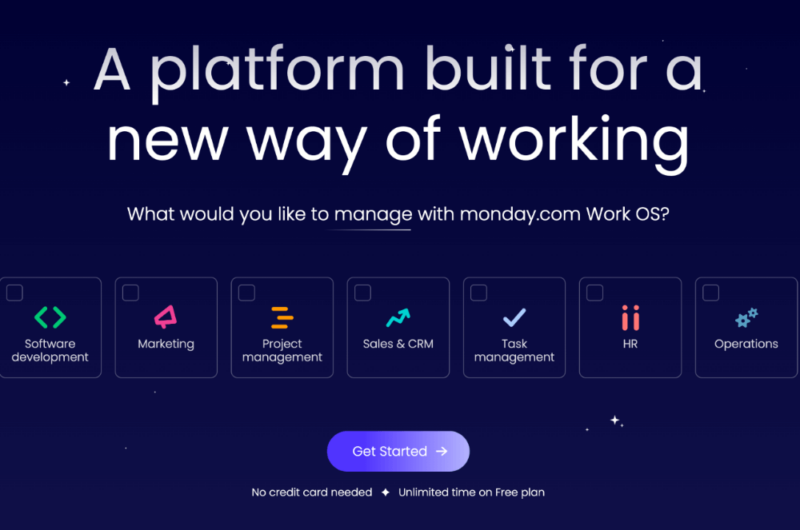
Getting the best project management software will make
portfolio management much easier.
A good portfolio manager will know the best software to manage company projects. To build a portfolio, they will need to research what software offers the right tools for creating, managing and completing projects effectively. Their decision-making will also include identifying which software offers the best value and fits nicely within their budget.
Importance of Portfolio Management
Much of project portfolio management may seem like common sense, and perhaps even an easy feat. This may lead you to question why it’s important to have a defined strategy in place. Below, we will highlight why project portfolio management is important and outline the benefits of managing your project management portfolio effectively.
Defines Company Ethos
Planned project portfolio management allows you to create a company ethos, where you can create standards and expectations for how team members should approach projects. It helps you create a unified identity and also guides employees on the best way to manage and approach each project.
Helps You Monitor Project Success
Much of portfolio management requires high-level analytics. You must consider tasks, budgets and the workforce, so actively managing your data helps you track how well things are going. There are tools with advanced reporting features that can help you do this, and we will cover them shortly.
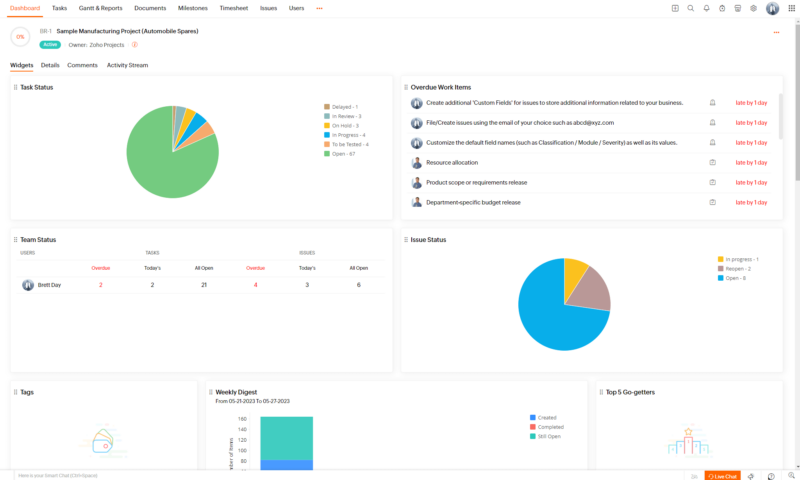
Key performance metrics can be monitored efficiently
via project management software dashboards.
Improves Productivity
In simple terms, managing a portfolio of projects lets you create processes. These processes serve as an anchor for how you manage projects and, in turn, help reduce the amount of guidance your team members require. Establishing defined processes will improve productivity because everyone will have a clear idea of what they need to complete their projects.
Let’s You Set Goals
Effectively managing your portfolio of projects allows you to set company goals for scalability. You can see which projects you excel at completing and take on more high-level projects with bigger brands and clients.
Project Portfolio Management Is Cost-Effective
It’s easy to get carried away when managing projects. Sometimes, companies are guilty of throwing everything at the kitchen sink and taking on more than they can handle. This leads to unnecessary spending, putting pressure on a company’s finances. Through proper management, you can exist within your budget and invest saved finances into other areas.
Best Practices in Portfolio Management
Now that you understand the importance of project portfolio management, we’ll cover how to bring it all together. This includes highlighting some best practices to ensure your project portfolio management runs smoothly and efficiently.
Create In-House Documents
Documentation is essential when managing your portfolio. With today’s project management software, you can create document management systems — often by integrating the best cloud storage services — allowing your team to access them remotely. Shared access to company practices and training resources also helps keep everything on track.
Analyze and Prioritize
Naturally, certain projects will be more complex than others. Some will require more time and resources. During planning, it’s best to assess what’s realistic in terms of capabilities and then make a defined list of priorities. You can do this at the project level, and for tasks and budgets. It’s best to stick to your list as best you can, but be adaptable should things go a different way.
Create a Project Quality Plan
It’s a good idea to create a project quality plan, as this can serve as the foundation for not only one project, but for all the projects within your portfolio. You can create this before you begin your project, and it should include risk assessments, work quality standards and deadline management.
Challenges in Portfolio Management
Let’s take a look at some of the challenges that come with project portfolio management, and ways you can manage and overcome them.
Keeping Everyone on the Same Page
Having a portfolio of projects means working with a wide range of people. Internal colleagues, external clients, contractors and others will all have their own temperaments and ideas. It can be difficult to please everyone and keep them on the same page, which may lead to roadblocks and conflict.
It’s critical to have a portfolio manager with exceptional communication skills who can avoid anti-patterns, and resolve conflict quickly and smoothly. Project managers with vast experience will be best at this, as will product owners if you’re working in product and software development.
Scalability
Growing a portfolio is a great aim, but it’s not easy. Having the time and resources to grow at your desired pace isn’t always possible. This may lead to a stagnation in growth, or growing your portfolio too quickly while lacking the human power (and finances) to back it up. Slow and steady tends to win the race in this regard, rather than trying to run before you can walk.
Increased Risks
The more you have to manage, the more you have to lose. Taking on additional projects leads to greater risks, which can easily turn into more issues and challenges. Here it’s important to have a portfolio manager who’s well-versed in risk assessment and management so that they can identify potential issues within the portfolio early.
In today’s world, a portfolio management tool is essential. Thankfully, there are many options available in the realm of portfolio management software, and we’ve had the opportunity to test almost all of them.
The best software allows you to create and manage multiple projects all in one place, letting you add other users and access professional documents remotely. Using the best tools enables you to create professional hubs and clearly outline your strategic objectives. You can also manage finances, implement risk management and generate tailored reports to monitor your KPIs.
If you’re looking for software to manage your project portfolios, we have some recommendations. Our favorite tool is monday.com as its design makes it easier to juggle multiple projects — you can learn more in our monday.com review. We also suggest reading our ClickUp review, which has useful tools for resource and document management.
Key Features of a Project Portfolio Management Software
To help you find the best software for centralized management, we’ll highlight some of the key features you should look for when considering a software platform. Both monday.com and ClickUp have all the features we cover below.
Multiple Project Management 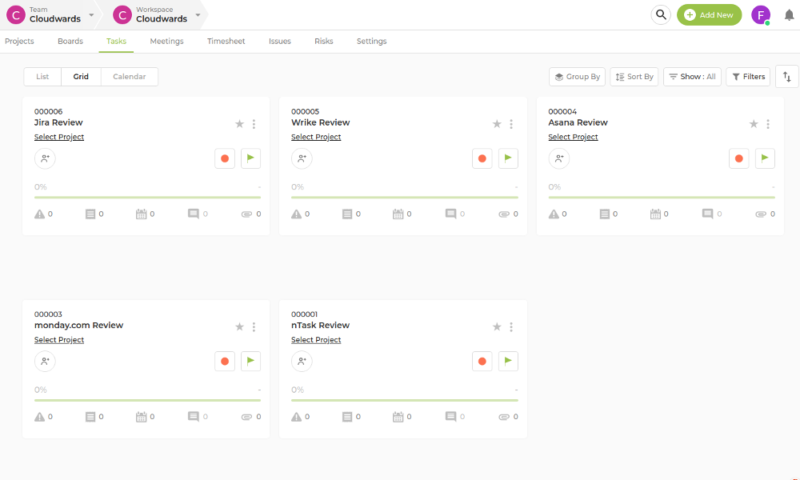
The best tools allow you to see a snapshot of all your projects on one screen.
Some tools only let you work on one active project at a time. When managing a portfolio, you’ll need powerful software that allows you to manage multiple projects simultaneously. Most services only offer this on paid plans. However, some of the best free project management software also enables you to manage a portfolio of projects.
No User Limitations
As a portfolio manager, you’ll likely need a larger number of team members for the projects you need to complete. Many services limit the amount of users you can add to an account. With that said, make sure you look for services that allow a high number of users — unlimited users would be ideal.
Strong User Dashboard 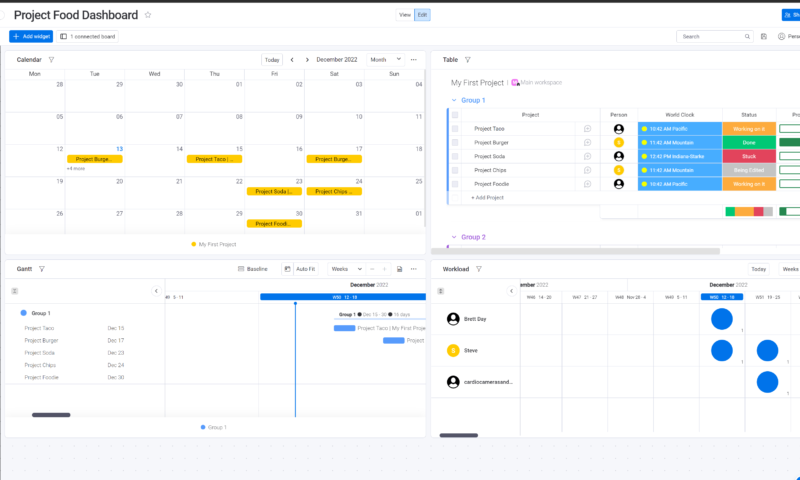
You want a platform that gives you all the important project
data without overloading your screen.
Services like monday.com have excellent dashboards. These dashboards allow you to digest multiple snippets of project data all on the same screen. You can also see task data within different views, such as Gantt charts, kanban boards, to-do lists and more.
Strong Reporting Features 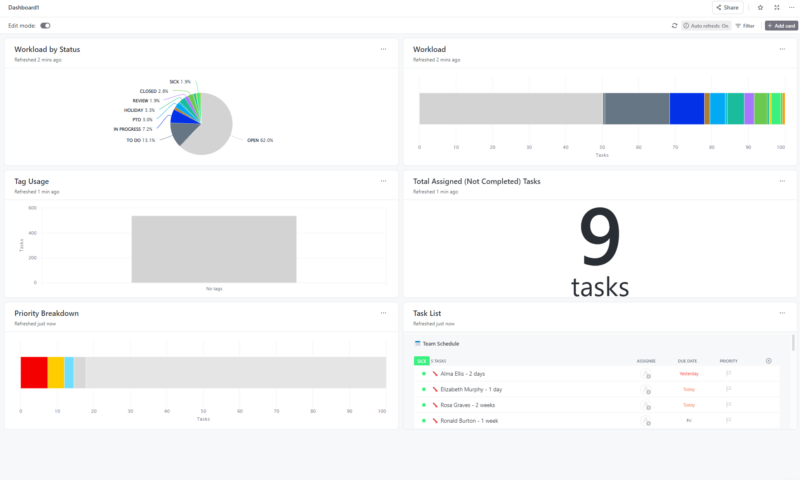
Eye-catching, informative reports will help you analyze
the health of your portfolio.
Reports serve an important role when it comes to the ongoing assessment of your portfolio. Look for tools that can offer analytics for different areas such as task management, finances, productivity and the likelihood of meeting your overall deadlines. The best tools also let you filter the most important data for you and your company.
Time Management Tools 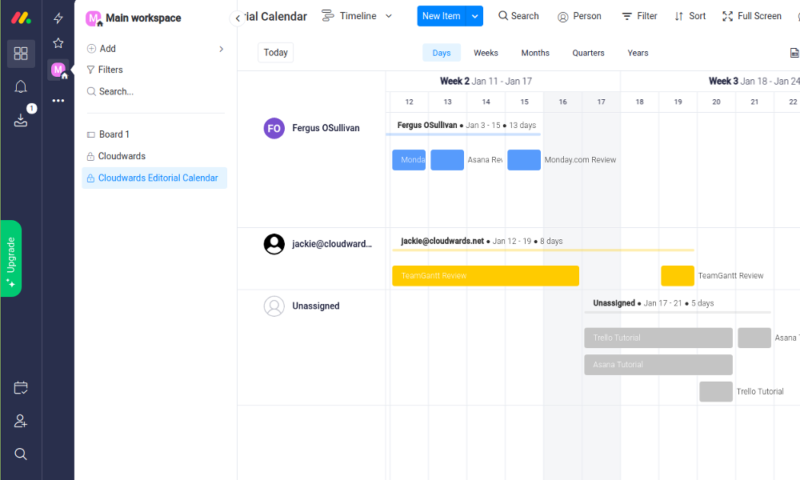
Time management tools are a surefire way to improve
efficiency and productivity.
The best time management tools allow you to zone in on how much time is being spent on projects. Such tools are essential for project portfolio management as they let you track how efficient your team is, helping you make changes to ensure all projects are completed on time.
Which Industries Benefit From PPM?
A range of industries can benefit from project portfolio management, especially those with more complex workloads and diverse portfolios. We will list some of the industries that are most likely to benefit from PPM below.
- IT
- Investment banks
- Government
- Healthcare industries
- Software developers
- Construction businesses
- Creative agencies
Final Thoughts
That brings this guide to a close. You should now have a clearer view of project portfolio management and the manager’s role. You can bookmark this page and use it as a reference if you need to refresh your knowledge. Also, be sure to check out the reviews of the software mentioned in the article — all of them will support you in managing your portfolio.
Remember, monday.com and ClickUp are our top two recommendations. They’re both very similar, so if you’re not sure which to choose, check out our ClickUp vs monday.com comparison guide.
Did you find this article helpful? What is your favorite software for project portfolio management? Is there another project management explainer you would like us to cover? Let us know in the comments. Thanks for reading.
FAQ: Portfolio Management System
-
Portfolio management is the management of multiple projects and the development of a company strategy that will apply to each of these projects.
-
Portfolio management within project management involves developing different strategies to manage multiple projects. In the finance world, popular types include passive portfolio management and active portfolio management.
-
Portfolio management is important because it’s extremely difficult to manage and execute the completion of multiple projects without it. Good portfolio management makes it easier to implement business objectives, provides guidance to other team members and helps you complete your projects.
-
The three key elements of portfolio management are planning, execution and reflection.
Portfolio management is the management of multiple projects and the development of a company strategy that will apply to each of these projects.n”}},{“@type”:”Question”,”name”:”What Are the Different Types of Portfolio Management?”,”acceptedAnswer”:{“@type”:”Answer”,”text”:”
Portfolio management within project management involves developing different strategies to manage multiple projects. In the finance world, popular types include passive portfolio management and active portfolio management.n”}},{“@type”:”Question”,”name”:”Why Is Portfolio Management Important?”,”acceptedAnswer”:{“@type”:”Answer”,”text”:”
Portfolio management is important because itu2019s extremely difficult to manage and execute the completion of multiple projects without it. Good portfolio management makes it easier to implement business objectives, provides guidance to other team members and helps you complete your projects.n”}},{“@type”:”Question”,”name”:”What Are the 3 Key Elements of Portfolio Management?”,”acceptedAnswer”:{“@type”:”Answer”,”text”:”
The three key elements of portfolio management are planning, execution and reflection.n”}}]}]]>
Let us know if you liked the post. That’s the only way we can improve.
